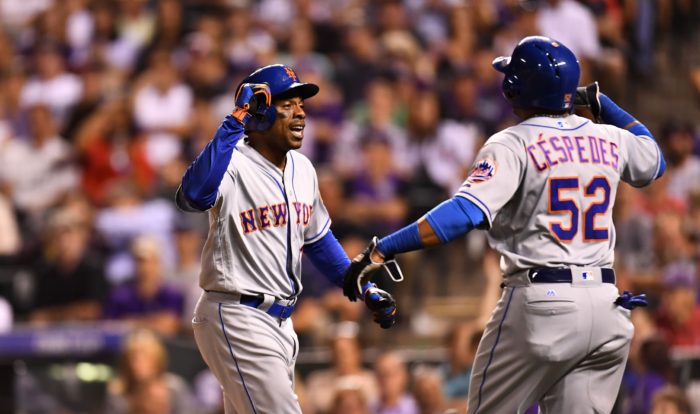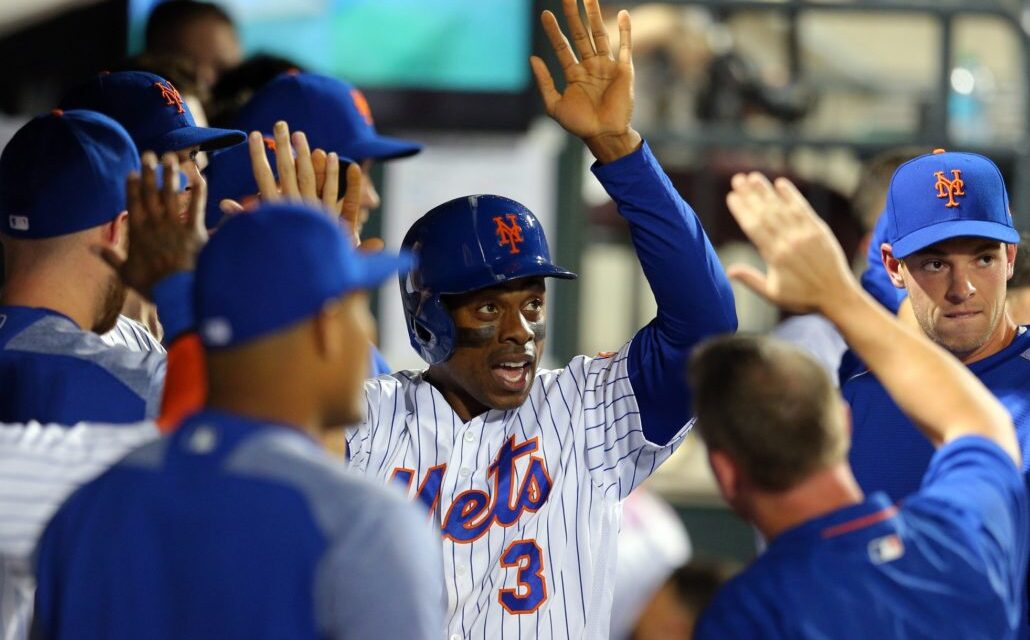
When the Mets signed 33-year-old outfielder Curtis Granderson prior to the 2014 season, it wasn’t the sexiest of moves.
Sure, Granderson was a very good ballplayer, and an even better person, but it wasn’t like the team added a Francisco Lindor type player like they did just this winter.
However, the Granderson move emanated a glimmer of hope.
After subsequent collapses in the 2007 and 2008 seasons, an injury-plagued 2009 campaign, the former Mets owners being wrapped up in a Ponzi scheme, and a rebuild in the early years of the 2010s, the Granderson acquisition signaled better days ahead.
The Mets had a budding young star pitcher in Matt Harvey, they heisted the Toronto Blue Jays by acquiring right-hander Noah Syndergaard and catcher Travis d’Arnaud in exchange for knuckleball hurler R.A. Dickey at the apex of his value, and had another stud pitcher in the making in Zack Wheeler, who they acquired from the San Francisco Giants in exchange for outfielder Carlos Beltran in his walk year. Oh, and just a kid named Jacob deGrom.
The talent flying through the pipelines meant that a new era of Mets baseball was upon us, and bringing in a durable outfielder with some pop would prove to be a shrewd move.
Now, Granderson’s first year with the Mets wasn’t anything to write home about. The team finished with a mediocre 79-83 record and Granderson owned just 1.2 fWAR.
But the next year would prove to be…well, something. It’s kind of hard to explain. It was frustrating, weird, boring, exciting and heartbreaking all jampacked into one season. A season that felt like three separate ones.
The Mets were no-hit twice. The first came in June at the hands of legendary San Francisco Giants starter Chris Heston, during a game in which the Mets started utility infielder Eric Campbell at third and Anthony Recker behind the plate, and used outfielder Darrell Ceciliani and infielder Danny Muno off the bench. They stood zero chance.
They were once again no-hit on the second to last day of the year by Washington Nationals ace Max Scherzer. This one hurt a lot less as the Mets (yes that same Mets who trotted out John Mayberry, Jr. on a semi-regular basis) had clinched the National League East, after beating up on those same Nationals over the prior two months.
Again, what a weird year.
I bring this all up because when you think of the 2015 Mets, you’d probably picture Matt Harvey’s swan song as an MLB ace. Or Daniel Murphy‘s insane postseason that saw him rock seven home runs. Or the acquisition of outfielder Yoenis Cespedes right down to the wire of the July 31 trade deadline just days after the team failed to acquire outfielder Carlos Gomez from the Brewers for infielder Wilmer Flores and the aforementioned Wheeler.
This isn’t even scratching the surface of all the crazy things that happened that year. For the sake of brevity, and because if you’re reading this you probably already know what down that year, I will spare you the finer details. But man, what a strange and beautiful year.
Lost among the craziness, however, was Curtis Granderson’s potent and integral campaign.
If, without looking, I asked you who led the Mets in fWAR during that grey-hair inducing season, who would you say? DeGrom? Harvey? Maybe even Murphy?
Those would all be appropriate guesses. They would be wrong, but they would make sense.
Well, the answer is actually Granderson. He led the charge to the tune of a 5.3 fWAR with deGrom right on his heels at 5.2.

Now, we also have to consider that we didn’t get full seasons from some important members of the team, such as Noah Syndergaard and Steven Matz who debuted mid-season, Cespedes who was acquired at the deadline, the captain David Wright who was injured for a majority of the year, and Murphy who didn’t become Babe Ruth until October.
Regardless, it doesn’t take away from Granderson’s excellent campaign. A lot of it can be chalked up to consistency and health. In fact, during Granderson’s three and a half years in Flushing, not once did he spend time on the disabled list.
But that 2015 season largely gets overshadowed. Granderson did not get voted in to the All-Star Game that season. He didn’t set any records, and he came in at No. 18 for MVP voting, which is pretty cool, but is far too low to even gain a whiff of widespread interest.
Even still, Granderson crept quietly to a triple slash of .259/.364/.457, with 26 taters, a 131 wRC+ and .357 wOBA over 157 games. In the field, the Illinois native also had 11 defensive runs saved and a 8.6 ultimate zone range in the outfield.
After 2015, Granderson spent another year and a half with the Mets and combined for 5.4 fWAR. He was ultimately sold off in the summer of 2017 as the Mets attempted to retool going forward by trading away some veterans on expiring contracts.
From his departure from the Mets in 2017 through his last season in 2019, Granderson played for four teams and then announced his retirement prior to last season.
A consummate professional through and through, watching Granderson proudly rock the blue and orange was always a treat. While he was never a superstar on the diamond during his time with the Mets, he didn’t have to be. He showed up everyday, did his job well, blessed the game with his grace and some TLC, and that was that.
So even though it might not be remembered, Granderson’s 2015 season was a necessary piece to the overall puzzle to what was a very peculiar season. But it wouldn’t be the New York Mets if it was simple.
















